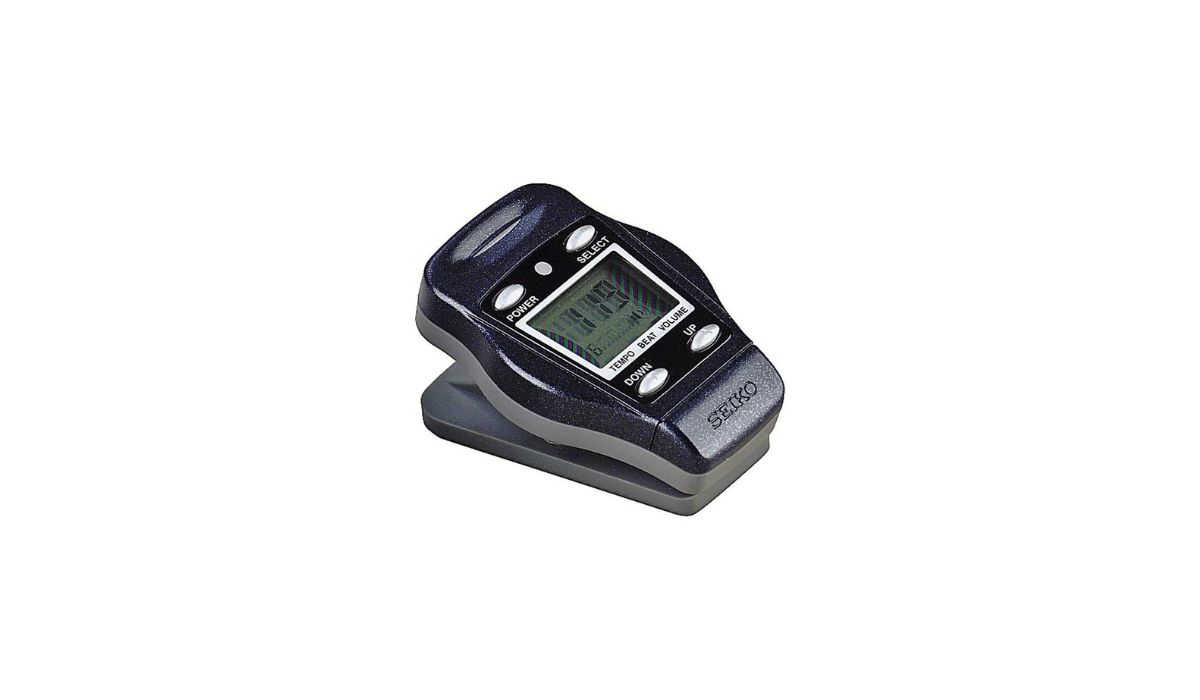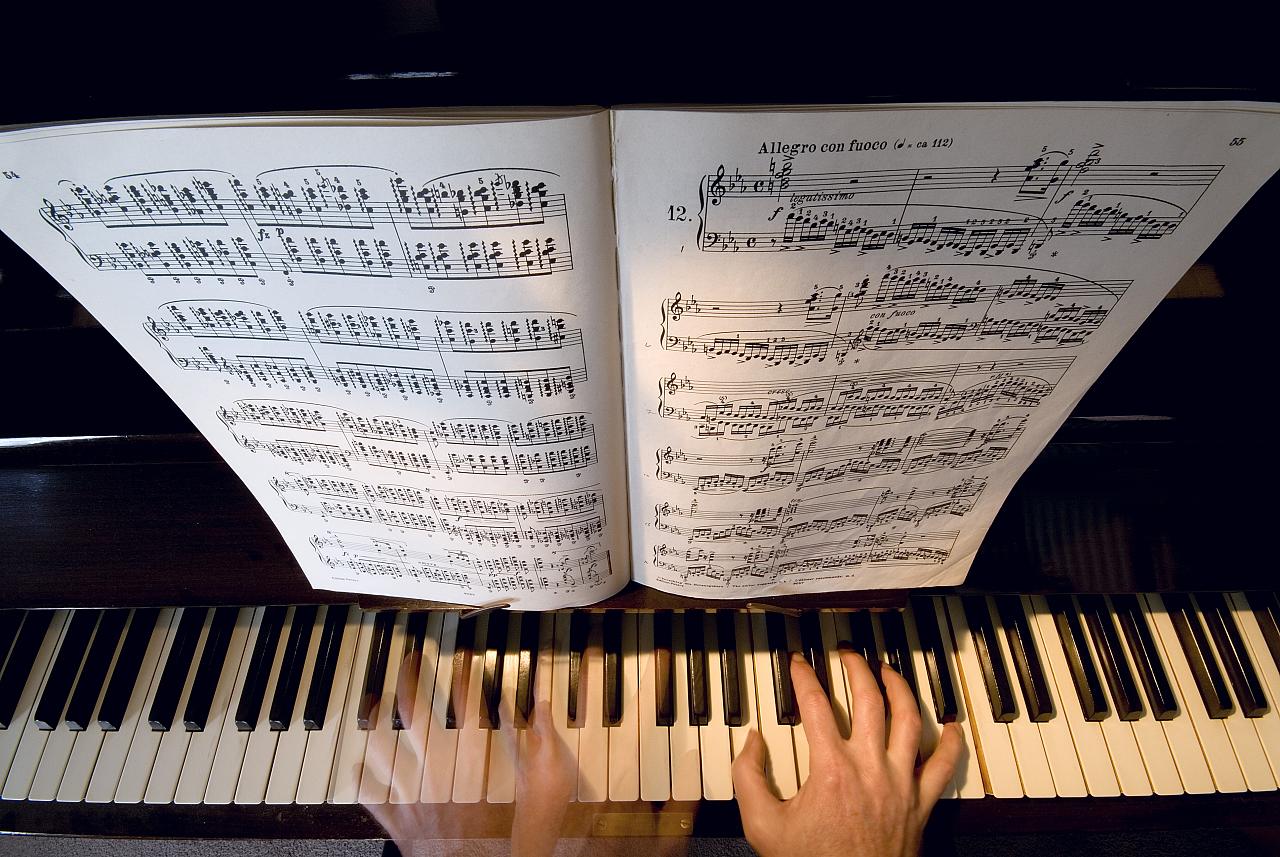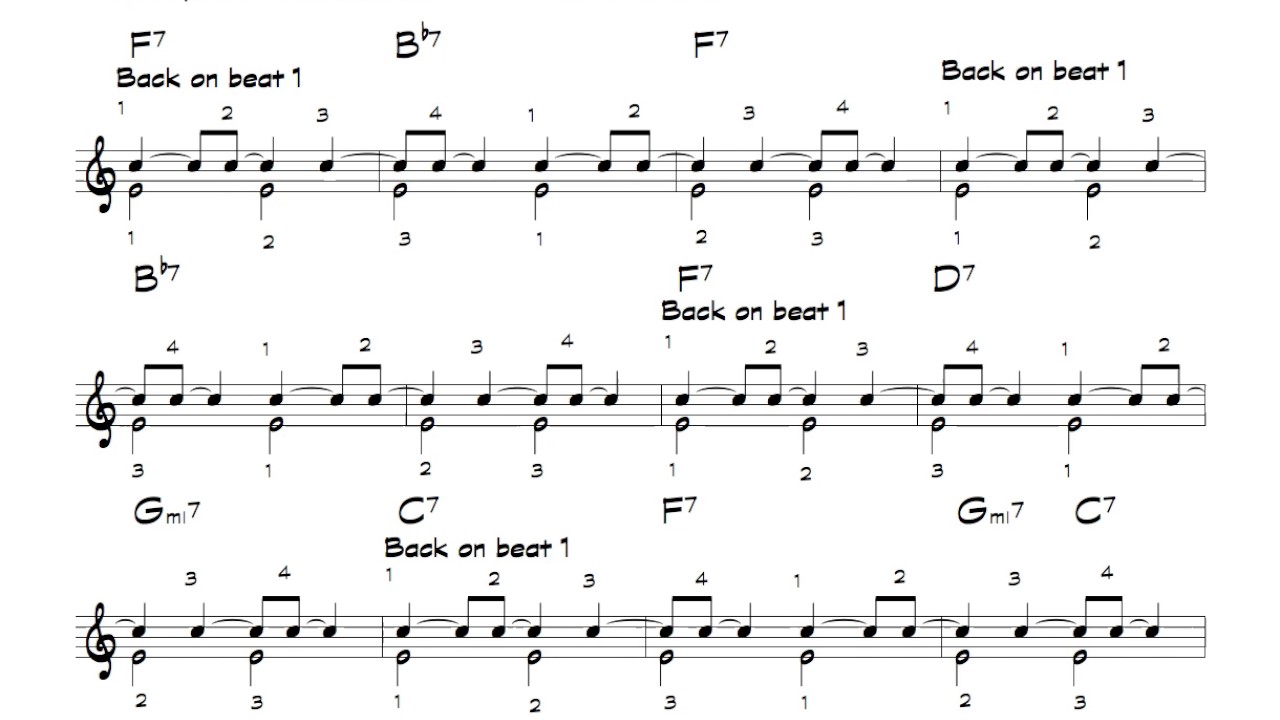Home>Production & Technology>Metronome>What Does The Metronome Count


Metronome
What Does The Metronome Count
Published: January 13, 2024
Learn how the metronome counts and why it is essential for musicians. Explore the benefits of using a metronome for accurate timing and improved musical performance.
(Many of the links in this article redirect to a specific reviewed product. Your purchase of these products through affiliate links helps to generate commission for AudioLover.com, at no extra cost. Learn more)
Table of Contents
Introduction
Welcome to the world of music, where timing and rhythm reign supreme. Whether you are a musician, dancer, or even a public speaker, maintaining a steady tempo is key to delivering a flawless performance. This is where the metronome count comes into play.
The metronome count is a fundamental aspect of music theory and practice. It serves as a guide, offering a consistent and steady beat to help musicians stay in time. In this article, we will explore the concept of metronome count, its importance in music, and how it can be determined.
Imagine a scenario where a band is rehearsing a complex piece of music. Each member must play their part precisely, synchronized with the rest of the ensemble. The metronome count acts as the conductor, setting the pace and ensuring that everyone stays in sync. Without a proper sense of time, the performance would lack cohesion, and the overall impact and effectiveness of the music would be compromised.
Not only is the metronome count crucial for ensemble playing, but it also plays a vital role in solo performances. Whether you are practicing scales, arpeggios, or intricate melodic lines, the metronome count keeps you accountable and helps you to develop a consistent sense of timing and rhythm.
The metronome count can be used for virtually any style of music, from classical to jazz, rock to electronic. It transcends genres and ensures that musicians of all backgrounds can improve their sense of timing and play with precision.
Definition of Metronome
Before diving deeper into the metronome count, let’s first define what a metronome is. In simple terms, a metronome is a device used in music to provide a steady and consistent beat.
Traditionally, metronomes were mechanical devices that consisted of a pendulum and a dial with markings indicating different beats per minute (BPM). When set in motion, the pendulum would swing back and forth, ticking at a specific rate, determined by the tempo selected on the dial. This ticking sound serves as the audible reference for musicians to stay on beat.
Today, metronomes come in various forms, including digital metronomes, mobile apps, and software programs. These modern implementations offer additional features such as different sound choices, visual animations, and advanced tempo settings.
The metronome count is derived from the BPM, which represents the number of beats (ticks) per minute. For example, a metronome count of 60 BPM would indicate one beat per second, while a metronome count of 120 BPM would represent two beats per second.
It’s important to note that the term “metronome count” can refer to both the BPM value and the act of following the metronome’s beat. In this article, we will primarily focus on the concept of following the metronome’s beat to improve timing and rhythm.
The metronome count acts as a fundamental tool in developing a musician’s sense of time, enhancing their ability to play with accuracy and consistency. By practicing with the metronome, musicians can refine their rhythmic skills and internalize the beat, making them more adaptable when playing with other musicians or in different musical contexts.
Now that we have a clear understanding of what a metronome is, let’s explore the importance of the metronome count in music.
Importance of Metronome Count
The metronome count plays a crucial role in music practice and performance. It offers numerous benefits to musicians of all levels and across various musical disciplines. Let’s explore why the metronome count is essential:
- Developing Timing and Rhythm: The metronome count helps musicians develop a strong sense of timing and rhythm. It trains them to play in sync with a steady beat, ensuring that every note is played accurately, and the overall musical flow is maintained.
- Building Speed and Accuracy: Practicing with the metronome count enables musicians to gradually increase their playing speed while maintaining precision. It allows them to push their technical abilities without sacrificing accuracy, leading to improved overall performance.
- Enhancing Musical Coordination: Playing with a metronome requires synchronizing hand movements or foot tapping with the beat. This helps musicians develop better coordination between their physical actions and the rhythm of the music, leading to smoother and more controlled performances.
- Improving Ensemble Playing: When musicians practice together in a group or band, the metronome count serves as a unifying element. It ensures that all members stay in sync, simplifying the process of playing together and creating a cohesive and polished sound.
- Developing Internal Pulse: The metronome count helps musicians internalize the beat, developing a natural sense of pulse and tempo. This allows them to maintain a steady pace even without an external reference, making them more adaptable in a live performance or improvisation context.
Whether you are a beginner or an experienced musician, incorporating the metronome count into your practice routine is invaluable. It provides a solid foundation for musicality, precision, and overall musicianship.
Now that we understand the importance of the metronome count, let’s explore how it can be determined.
How to Determine Metronome Count
Determining the appropriate metronome count for a piece of music involves considering factors such as tempo markings, musical style, and personal preference. Here are several methods to help you determine the ideal metronome count:
- Tempo Markings: Many pieces of music include tempo markings, indicating the desired speed at which the music should be played. These markings can be in the form of Italian words (e.g., Allegro, Adagio) or specific BPM indications. Consult the score or sheet music for any tempo markings provided by the composer.
- Feeling the Pulse: If there are no tempo markings, you can determine the metronome count by feeling the pulse of the music. Listen closely to the rhythm and tap your foot or clap your hands to establish the steady beat. Once you have a feel for the pulse, match it with the metronome to find the appropriate count.
- Using Music Software: If you have access to music notation software or a digital audio workstation (DAW), you can input the music and use the software’s metronome function to determine the tempo. These programs often have a built-in metronome feature that can sync with the music, making it easier to find the exact metronome count.
- Reference Recordings: Listening to professional recordings of the piece can also provide insight into the appropriate metronome count. Pay attention to the tempo and rhythmic accuracy in these recordings and adjust your metronome accordingly.
- Experimentation: Sometimes, determining the ideal metronome count involves trial and error. Start with a moderate tempo and gradually increase or decrease the metronome count until it feels comfortable and in line with the musical style and character of the piece.
Remember that the metronome count should support the musical expression and intended feel of the piece. It should not be rigid or robotic but should enhance the musicality and flow.
Next, we will explore the factors that can affect the metronome count and how to use it effectively in practice and performance.
Factors Affecting Metronome Count
The metronome count can be influenced by various factors that impact the overall feel and interpretation of the music. Understanding these factors will help you determine the appropriate metronome count for your performance. Here are some key factors to consider:
- Tempo Indication: The composer may provide specific tempo markings in the score, indicating the intended speed of the music. For example, “Moderato” suggests a moderate tempo, while “Presto” signifies a fast tempo. These indications can give you a starting point for the metronome count.
- Musical Style: Different musical styles have their own characteristic tempos. Classical music, for instance, often requires a more precise and disciplined approach to tempo, while jazz music may have more flexible and expressive variations. Consider the conventions and traditions of the musical style when determining the metronome count.
- Phrasing and Articulation: The phrasing and articulation of the music will influence the metronome count. Longer, sustained notes may require a slightly slower metronome count to allow for expressive phrasing, while shorter staccato notes may benefit from a slightly faster count for clarity and precision.
- Emotional Content: The emotional content of the music will impact the metronome count. Reflect on the mood and character of the piece and adjust the metronome count accordingly. A melancholic piece may benefit from a slightly slower count, while an energetic and lively composition may require a faster count.
- Interpretation: Personal interpretation is an essential aspect of music performance. While the metronome count provides a foundation, consider your own artistic choices and liberties. You may choose to slightly vary the metronome count at specific moments to create musical expression and dynamics.
- Collaboration: If you are performing with other musicians, it is important to establish a consistent metronome count that works well for everyone. Communication and rehearsing together will help find a metronome count that supports the collective interpretation and allows for smooth ensemble playing.
Remember that the metronome count is not a set-in-stone rule, but a flexible tool that can be adjusted to serve the music and personal interpretation. It is important to find a balance between precision and artistic expression when determining the metronome count.
Now that we have explored the factors affecting the metronome count, let’s dive into some tips for using it effectively in practice and performance.
Tips for Using Metronome Count Effectively
The metronome count is a valuable tool for musicians to improve their timing, rhythm, and overall performance. Here are some tips to help you make the most out of using the metronome count:
- Start Slow: When practicing a new piece or challenging passage, begin with a slower metronome count. This allows you to focus on accuracy and build a strong foundation before gradually increasing the tempo.
- Incremental Increases: When ready to raise the tempo, do it gradually. Increase the metronome count by a small increment (e.g., 5 BPM) and practice at that speed until you feel comfortable before moving on to the next increment.
- Practice Subdivisions: Use the metronome count to practice rhythmic subdivisions. Set the metronome to a slower count and focus on playing evenly within each beat, whether it’s quarter notes, eighth notes, or sixteenth notes.
- Use Accentuation: Experiment with accentuating specific beats or notes while practicing with the metronome count. This will help you develop a sense of musicality and emphasize key moments in the music.
- Play in Different Time Signatures: Explore different time signatures with the metronome count. This will improve your ability to navigate complex rhythmic patterns and develop a solid understanding of different musical structures.
- Practice with Dynamic Variation: Incorporate dynamic variation into your practice sessions. Start softly and gradually increase the volume, allowing the metronome to guide the intensity and shape of your performance.
- Record Yourself: Utilize technology to record yourself playing along with the metronome count. This allows you to review your performance objectively and identify areas for improvement.
- Experiment with Subdivided Clicks: Some metronomes offer the option to subdivide the beat, providing a softer click or tone in between the main beats. This can help you internalize complex rhythms and maintain a consistent sense of time.
- Practice Without the Metronome: While the metronome count is a valuable practice tool, it is also crucial to develop the ability to play in time without reliance on external aids. Gradually decrease the use of the metronome to develop your internal sense of timing and rhythm.
Each musician may have their own approach to using the metronome count effectively. Find what works best for you and adapt these tips to fit your practice routine and musical goals.
Now, let’s address some common misconceptions about the metronome count.
Common Misconceptions about Metronome Count
The metronome count is a powerful tool for musicians, but there are several misconceptions that can lead to misunderstanding or misuse. Let’s address some of these misconceptions to ensure a clear understanding:
- Metronome count equals musical expression: One of the common misconceptions is that following the metronome count strictly eliminates musical expression. However, the metronome count provides a foundation for timing and rhythm, and it can be adjusted and interpreted to accommodate musical expression and dynamics. It is a tool to enhance musicality rather than stifling it.
- Metronome count is only for beginners: Another misconception is that the metronome count is only necessary for beginners who are still developing their sense of timing. In reality, professional musicians frequently use the metronome count to refine their skills, improve technical accuracy, and maintain consistent tempo in complex passages.
- Metronome count hampers creativity: Some believe that relying on the metronome count restricts creative freedom and spontaneity. However, the metronome count serves as a guide, ensuring that the timing remains precise and coherent. It provides a reliable framework that allows musicians to explore their creative ideas within a consistent rhythmic structure.
- Metronome count is only for classical music: While the metronome count is commonly associated with classical music, it is applicable to all genres and styles. Musicians across various genres, including jazz, rock, and pop, can benefit from practicing with the metronome count to improve their timing, coordination, and overall performance.
- Metronome count replaces natural feel: Some musicians fear that relying too heavily on the metronome count will lead to a robotic and unnatural performance. However, the metronome count is designed to enhance the musician’s natural sense of timing and rhythm, not replace it. With practice, musicians can internalize the beats and develop their natural feel while maintaining consistency and precision.
It is important to understand that the metronome count is a versatile tool that can be tailored to individual musical styles, preferences, and goals. It provides musicians with a solid foundation for timing and rhythm, allowing them to develop their skills and express their musicality more effectively.
Now, let’s conclude our exploration of the metronome count.
Conclusion
The metronome count is an invaluable tool for musicians of all levels and across various musical disciplines. It serves as a guide, offering a consistent and steady beat to help musicians stay in time and improve their timing, rhythm, and overall performance.
From developing a sense of pulse and coordination to enhancing ensemble playing and building speed and accuracy, the metronome count plays a vital role in the journey of a musician. It provides a foundation upon which musicians can build their skills, ensuring that every note is played with precision and musicality.
While there are common misconceptions surrounding the metronome count, it is important to understand that it is a flexible tool that allows for interpretation, expression, and creativity. It is not a rigid constraint, but rather a guide to help musicians refine their sense of time and play with confidence.
By incorporating the metronome count into your practice routine, experimenting with different tempos, and gradually increasing speed, you can develop a strong internal sense of timing and rhythm. This will enable you to play with precision, adapt to different musical styles, and collaborate seamlessly with other musicians.
Remember, the metronome count is not a replacement for musical expression and feel. It is a tool that supports and enhances these elements, allowing you to deliver an engaging, cohesive, and dynamic performance.
So, whether you are a pianist, guitarist, drummer, or any other musician, embrace the metronome count as a valuable ally in your musical journey. Let it guide you toward precision, enhance your sense of timing, and unlock your full potential as a performer.











